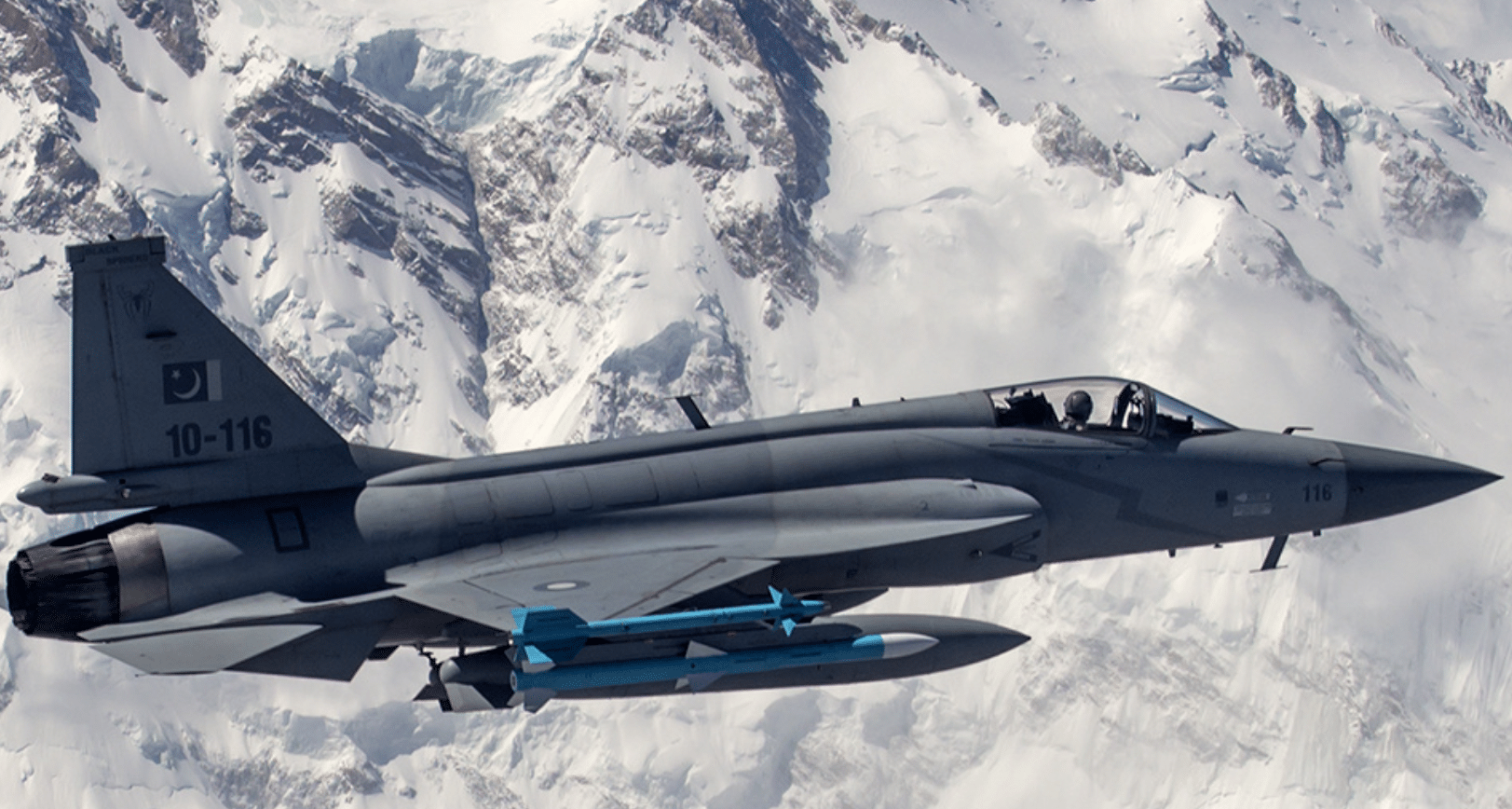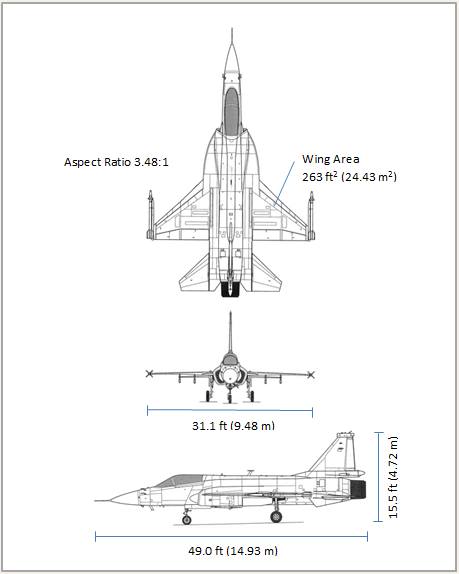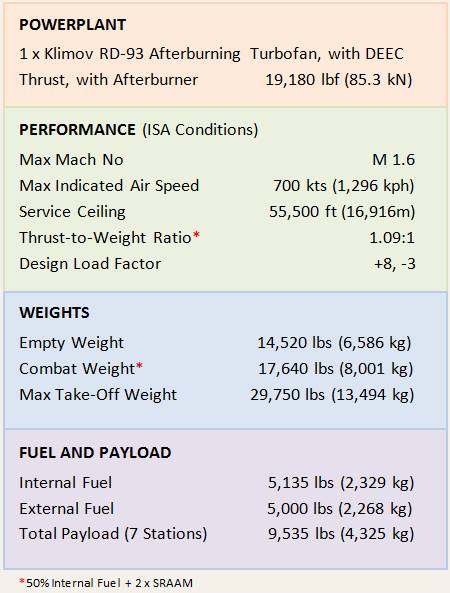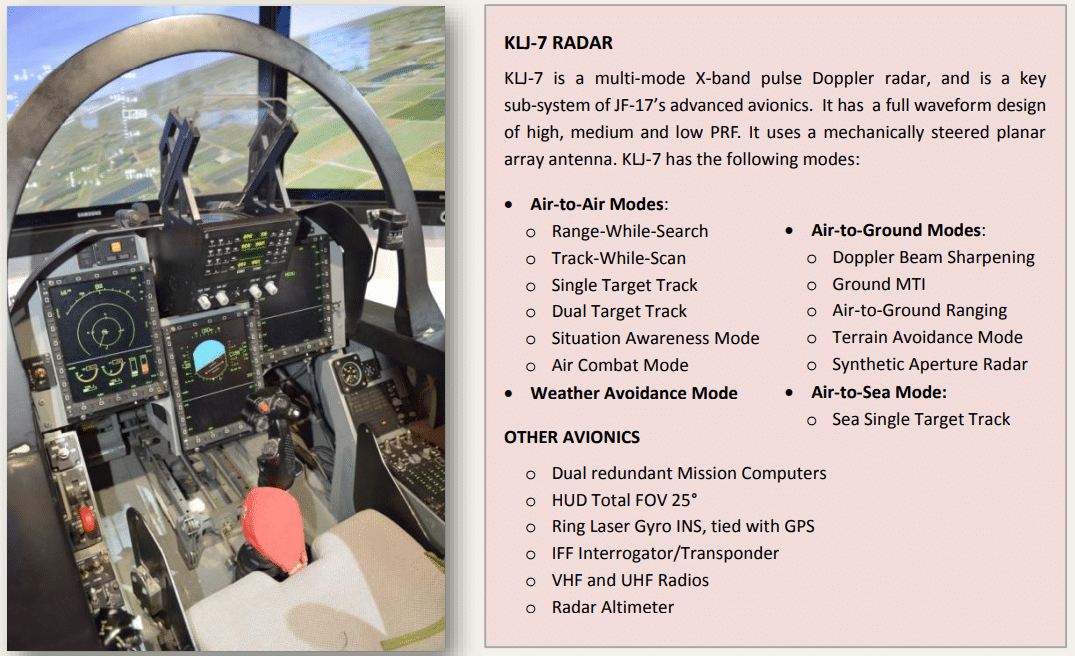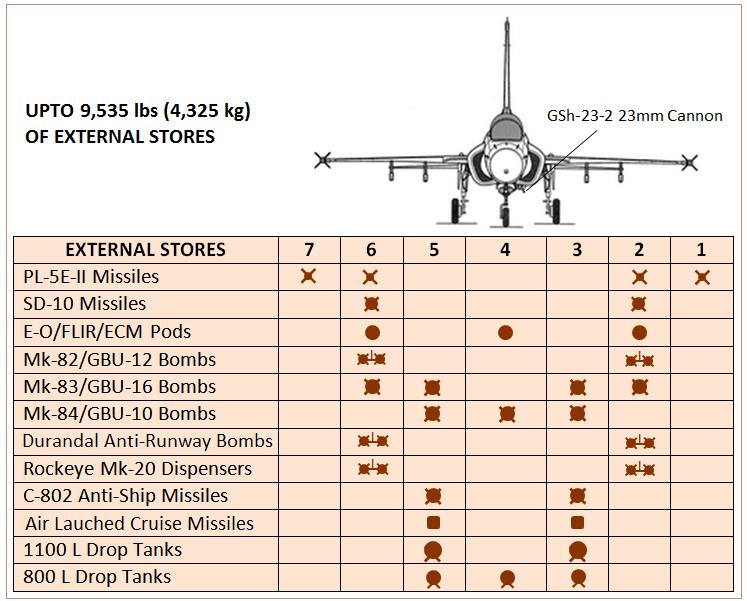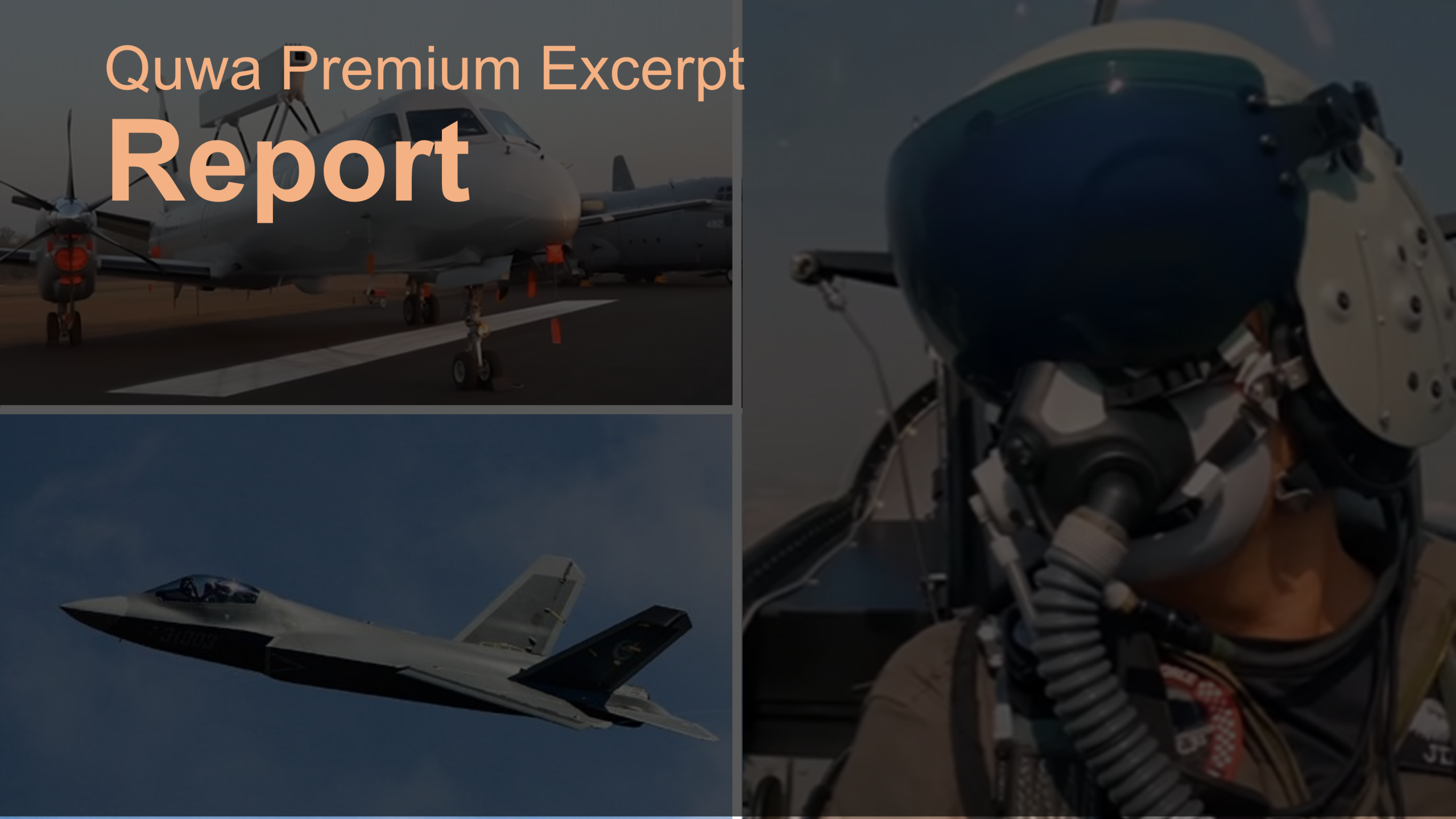Collaboratively produced by the Aviation Industry Corporation of China (AVIC) and Pakistan Aeronautical Complex (PAC), the JF-17 Thunder lightweight multi-role fighter is the emerging mainstay fighter platform of the Pakistan Air Force (PAF). Borne from the PAF’s need for an adept and affordable backbone fighter unencumbered by external, particularly Western, supplier costs and pressures, the JF-17 is also Pakistan’s gateway to aircraft manufacturing, custom integration and design and development work.
Background on the JF-17 Thunder
In 1995, PAC signed a memorandum-of-understanding (MoU) with the AVIC subsidiary Chengdu Aircraft Industry Group (CAIG) to co-develop and co-produce the JF-17, then known as the FC-1 and Super-7. The first Super-7/FC-1 prototype (renamed ‘JF-17 Thunder’) rolled-out from CAIG’s facilities in May 2003. In August 2003, the JF-17 prototype (PT-1) had conducted its maiden test flight in China. Development of the JF-17 airframe continued, with PT-4 incorporating noticeable changes, most notably the inclusion of diverterless supersonic inlet (DSI) and leading-edge root extensions (LERX).
Under the co-production workshare agreement with AVIC, PAC would manufacture 58% of the airframe’s subassemblies, including its wings, horizontal stabilizer and vertical tail. The remaining 42% – including the fuselage – would be sourced from CAIG. However, final assembly would take place in PAC, which – via its Aircraft Manufacturing Factory (AMF) – has the capacity to rollout 25 JF-17s per year. In 2005, PAC began manufacturing certain components. By 2009, it had ramped up to manufacturing its share of the airframe.
The JF-17 entered PAF service in 2010 by replacing the PAF No. 26 squadron’s Nanchang A-5 Fantan attack aircraft. In 2011, the second (and final) A-5 squadron, No. 16, also switched over to the JF-17. The No. 16 and No. 26 operate the JF-17 Block-I, which was introduced to primarily deploy beyond-visual-range air-to-air missiles (BVRAAM), so as to bolster the PAF’s air defence capabilities.
In 2013, PAC and AVIC had begun manufacturing the improved JF-17 Block-II. The JF-17 Block-II introduced in-flight refueling capabilities through a removable hose-and-drogue probe and increased oxygen supply for longer-endurance flights. The JF-17 Block-II achieved full operational capability (FOC) in 2015. Since then, the PAF’s No. 2 and No. 14 squadrons had swapped their Chengdu F-7Ps for JF-17 Block-II fighters. As of 2017, the PAF has also certified the deployment of precision-guided and stand-off range munitions from the JF-17, specifically the Range Extension Kit (REK) and C-802 anti-ship missile. PAC will also integrate the ASELPOD electro-optical targeting pod from Turkey’s Aselsan, which will enable the JF-17 to guide munitions against fixed and moving targets as well as undertake reconnaissance roles.
By September 2017, PAC rolled-out 90 JF-17 Block-I and Block-II fighters. These have been deployed with four frontline squadrons and a fifth unit at the PAF’s Combat Commanders School (CCS). The PAF had originally intended to acquire 100 JF-17 Block-I and Block-II fighters to help supplant 190 legacy F-7P and Mirage III/5 fighters. The PAF envisages equipping the JF-17 with the same kinds of air-to-surface and air-to-air munitions found on contemporary platforms, be it BVRAAM, WVRAAM, laser-guided bombs (LGB), precision-guided bombs (PGB), anti-ship missiles and, eventually, air-launched cruise missiles and various other stand-off range munitions (e.g. glide bombs and anti-radiation missiles).
Klimov RD-93: The JF-17’s Engine
For the final design, the PAF opted to use the Klimov RD-93 turbofan engine from Russia. The RD-93 is an afterburning turbofan engine with digital electronic engine control (DEEC). Its thrust (with afterburner) is 85.3 kN (8,700 kgf). The RD-93 is a variant of the Klimov RD-33, which powers the Mikoyan MiG-29. The JF-17 will be using the RD-93 for the foreseeable future, but PAC did not dismiss an engine change for the program. The Klimov RD-33MK and Guizhou WS-13 were listed as potential options.
The JF-17’s Avionics and Weapons Suite
In the cockpit, the JF-17’s human-machine interface (HMI) comprises of three multi-function displays (MFD), hands-on-throttle-and-stick (HOTAS) interface and head-up display (HUD). The JF-17 Block-I had used a hybrid flight control system: bank and yaw were managed mechanically and pitch electronically.
The JF-17 Block-I came armed with the SD-10 BVRAAM, which was guided by the Nanjing Research Institute of Electronics Technology (NRIET) KLJ-7 multi-mode X-band pulse-Doppler radar. The NRIET KLJ-7 is capable of displaying 64 search targets in the Range-While-Search-mode and tracking eight targets under track-while-scanning (TWS) mode. It can simultaneously engage two targets with radar-guided air-to-air missiles, such as the SD-10 BVRAAM. The Block-I and Block-II are also armed with the PL-5EII within-visual-range air-to-air missile (WVRAAM).
The Future of the JF-17
Having realized the JF-17’s preliminary goal of being an affordable and adept backbone fighter, the PAF is now steering the JF-17 to become its qualitative driver. Historically, imported fighters from the West were viewed as means to introduce new-generation systems and capabilities to the PAF fleet, but with the rising cost of importing such arms, the PAF has staked that essential role to the forthcoming JF-17 Block-III.
The PAF expects to see the JF-17 Block-III enter production in 2019 or 2020. The JF-17 Block-III will utilize an active electronically-scanned array (AESA) radar (see Quwa’s brief for background information on AESA radars), which will imbue the JF-17 with enhanced defensibility against electronic warfare (EW) jamming. This will join an integrated electronic countermeasures (ECM) and EW suite along with a helmet-mounted display and sight (HMD/S) system. The JF-17 will also be configured with a high off-boresight (HOBS) AAM (see Quwa’s background briefs on HOBS AAM and HMD/S for context). The JF-17 Block-III will also eschew the hybrid flight control system for a three-axis fly-by-wire (FBW) flight control system.
Bridging the JF-17 Block-II and the JF-17 Block-III is the two-seat JF-17B. The JF-17B made its maiden test flight in April 2017. The two-seat variant incorporates several design changes to the JF-17 Block-I/II, among them a swept-back vertical stabilizer. The first JF-17B will join the PAF in December 2017.
The following specifications are from an upcoming marketing brochure from PAC for the JF-17. The Profile article above draws exclusively from various statements from PAF officials, PAF-sanctioned journalists and PAC’s upcoming marketing material. Excerpts from PAC’s brochure can be found below.

